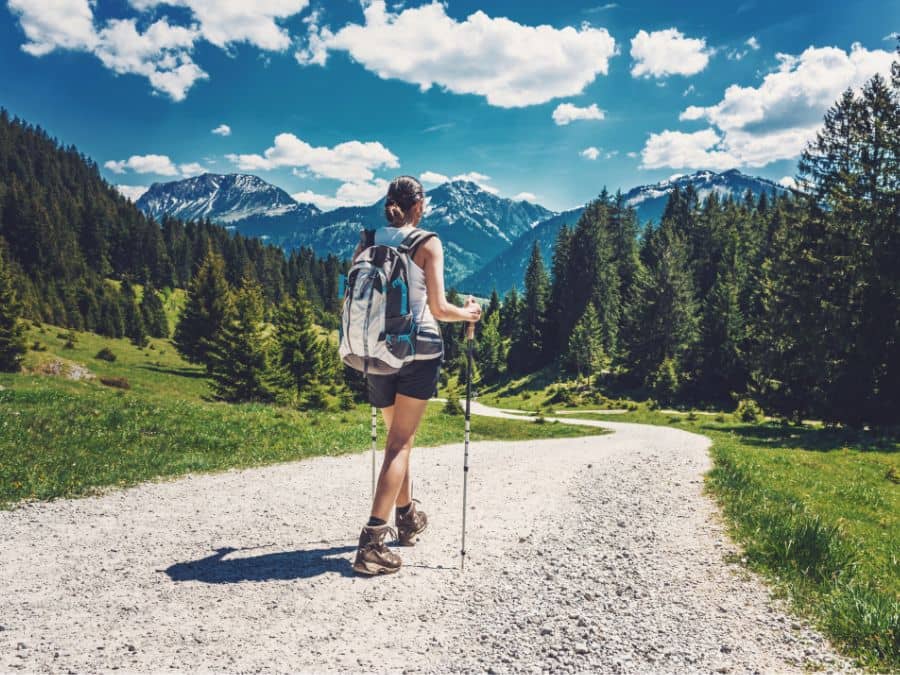A Comprehensive Guide to Training for Hiking Fitness
The Importance of Physical Fitness for Hiking
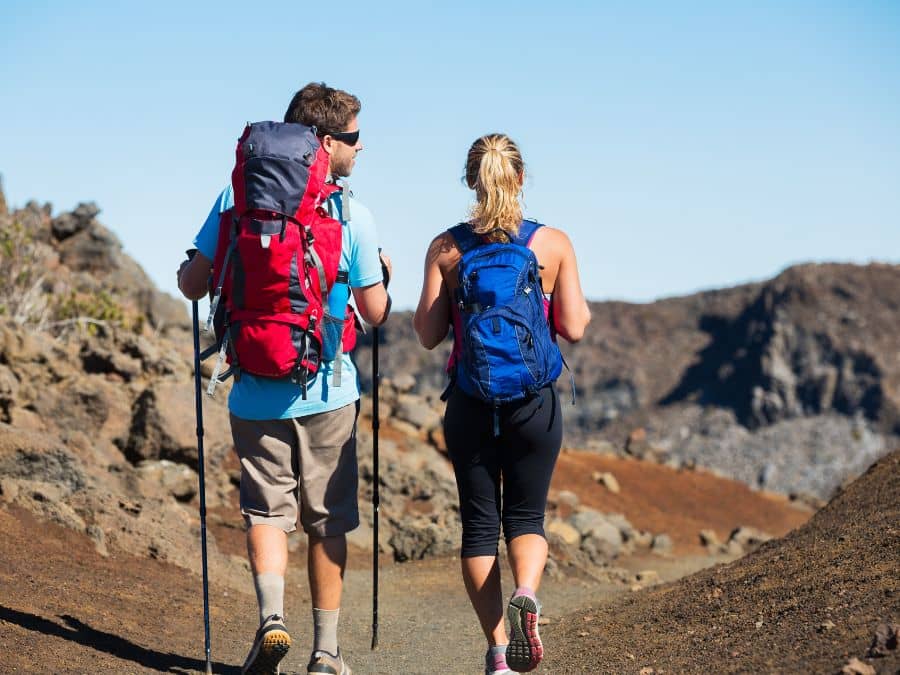
Hiking is a wonderful activity that allows you to explore the great outdoors, but it can also be physically challenging. That’s why it’s important to be physically fit before embarking on a hiking trip. Being in good shape can help prevent injury, improve endurance, and make the overall experience more enjoyable.
Physical fitness for hiking involves a combination of cardiovascular endurance, muscular strength, flexibility, and endurance training. Incorporating these elements into your fitness routine will not only prepare you for hiking but also benefit your overall health.
Cardiovascular Training
The Benefits of Cardiovascular Training for Hiking
Cardiovascular training is one of the most important aspects of physical fitness for hiking. By engaging in regular cardio exercises, you improve your heart and lung function, which helps you to hike longer and more comfortably.
When hiking on a trail, you’ll encounter steep inclines, rocky terrain, and varying elevations that can cause fatigue and make breathing difficult. However, if you train regularly with cardio exercises, you’ll be better equipped to handle these challenges.
In addition to improving your overall fitness level, cardio training also helps with weight management. Hiking can be physically demanding and require a considerable amount of energy.
Therefore, it’s essential to maintain a healthy weight before hitting the trails. By incorporating cardio exercises into your fitness routine, you burn calories and lose excess body fat more efficiently.
Types of Cardio Exercises to Incorporate into Your Training Routine
When it comes to cardiovascular training for hiking preparation, there are several types of exercises that work best:

- Running – Running is an excellent way to improve cardiovascular endurance as it engages the entire body.
- Cycling – Cycling is another effective exercise that works out the lower body while building endurance.
- Hiking – Hiking itself can serve as an excellent form or practice for cardiovascular endurance when done at a slower pace. Whether indoor or outdoor activities are chosen — such as on a treadmill or stationary bike — increasing resistance over time while practicing steady-state (continuous) or interval-style (short bursts followed by rest periods) training will bring cardiovascular benefits over time.
It’s essential not only to incorporate these exercises into your routine but also gradually increase their difficulty level over time as your fitness level improves gradually. By doing so consistently and including rest days for recovery purposes between exercise sessions specified in the following sections, you’ll improve your cardiovascular health and be better prepared for hiking.
Strength Training: Building Your Power for the Trail
When it comes to hiking, strength training is one of the most crucial aspects of physical fitness that should not be overlooked. In order to tackle steep inclines and rough terrain, your body needs to be able to handle the demands placed upon it during a hike. Building up your strength through targeted exercises will help you power through any hike with ease.
The Importance of Strength Training for Hiking
The benefits of strength training extend beyond simply being able to lift more weight or look more muscular. For hikers, building up lower body and upper body strength can make all the difference in tackling rugged trails and carrying heavy packs.
Strong leg muscles will make uphill treks easier while also reducing stress on your joints from uneven terrain. Meanwhile, upper body strength will help you carry a backpack comfortably and maintain balance on slippery or unstable surfaces.
Exercises to Build Lower Body Strength
Squats are an excellent exercise that target multiple muscles in your lower body, including your glutes, hamstrings, and quads. Start with just your own body weight as resistance before gradually adding weights as you progress. Lunges are another great option for strengthening individual leg muscles while also improving balance and stability.
When it comes to building endurance for long hikes with steep inclines, hill sprints are an effective way to build both speed and power in your legs. Find a hill that’s relatively steep but not too long (about 50-100 meters) and sprint up as fast as you can before walking down for recovery.
Exercises to Build Upper Body Strength
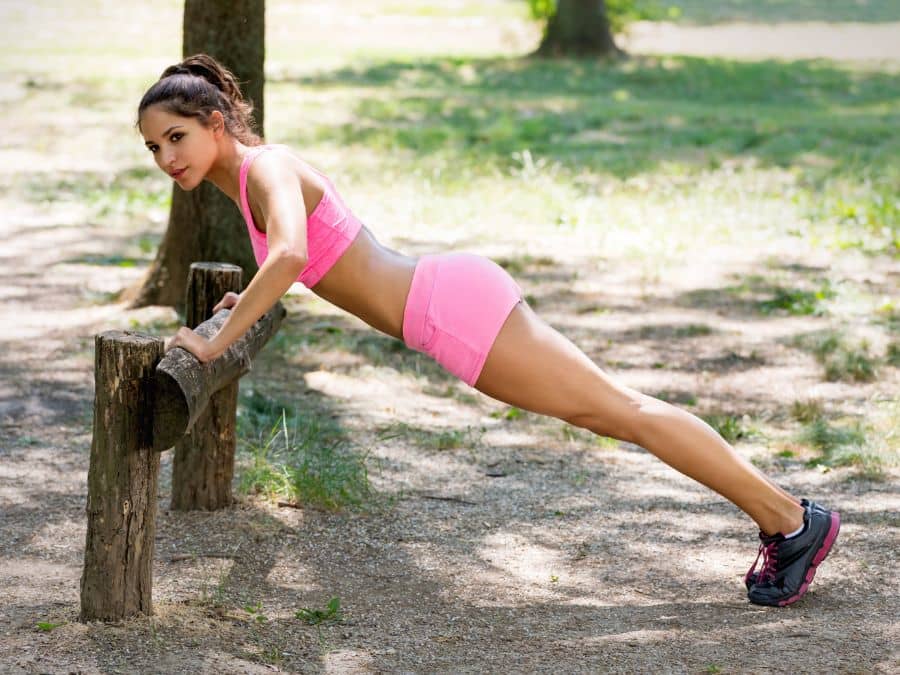
Push-ups are a classic exercise that work multiple muscle groups in your chest, shoulders, triceps, and core. Aim for sets of 10-15 reps at first before increasing intensity by elevating feet or adding weights. Rows and pull-ups are also great exercises for building upper body strength and targeting back muscles that can help improve posture and balance on the trail.
Remember, building strength takes time and patience, so don’t try to push yourself too hard too fast. Gradual progressions with weights or intensity will help you avoid injury and build a stronger foundation for your hiking adventures.
The Importance of Flexibility Training for Hiking
When thinking about training for hiking, many people focus solely on cardio and strength training. However, flexibility training is just as important! Improving your flexibility will not only help prevent injury but will also enhance your overall performance during hikes.
As you hike up steep hills or navigate through rocky terrain, your body is constantly moving in different directions and angles. Therefore, having a flexible body allows you to move more efficiently and with greater ease.
Stretching Exercises to Improve Flexibility
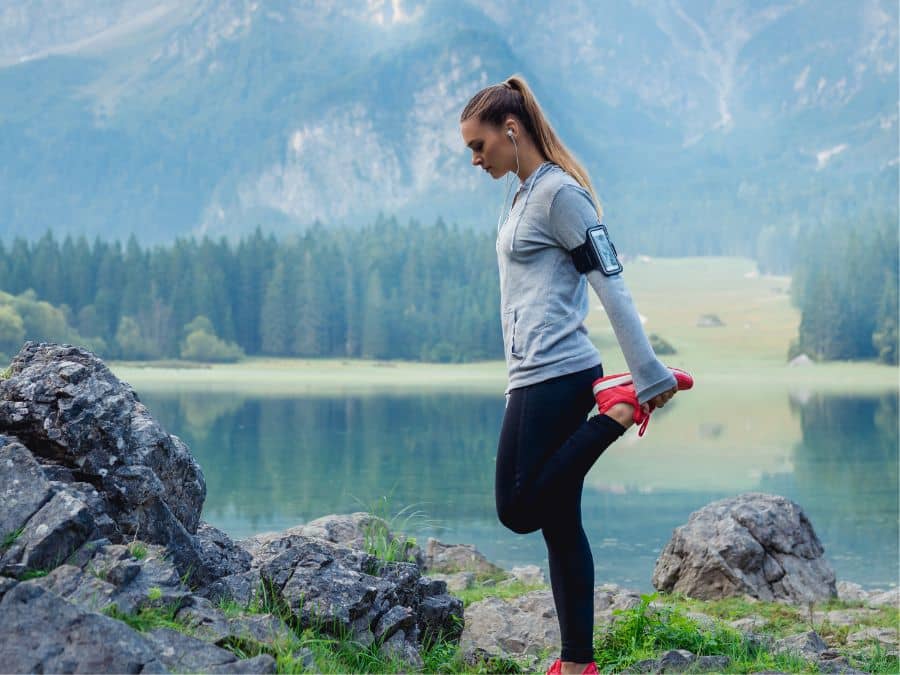
There are many stretching exercises that can help improve flexibility when hiking. One of the best ways to start is by incorporating dynamic stretches into your warm-up routine.
Dynamic stretches are active movements that prepare the muscles for physical activity by increasing blood flow and flexibility. Examples of dynamic stretches include walking lunges with a twist, leg swings, arm circles, and high knees.
Another way to improve flexibility is through static stretching after your workout or hike. Static stretching involves holding a stretch in one position for 20-30 seconds at a time.
This type of stretching helps to lengthen muscles and increase range of motion. Examples of static stretches include hamstring stretches (touching toes), quad stretches (pulling foot towards buttocks), calf stretches (putting hands on wall and leaning forward), chest stretch (crossing arms behind back), and shoulder stretch (pulling arm across chest).
Beyond Stretching
In addition to traditional stretching exercises, there are other forms of flexibility training that can benefit hikers such as yoga or Pilates classes. Both practices focus on building strength while improving flexibility through various poses or exercises.
Remember that improving your body’s flexibility takes time and consistency! Incorporating regular stretching exercises into your fitness routine will lead to better performance during hikes while decreasing risk of injury along the way.
The Importance of Endurance Training for Longer Hikes
Endurance training is a crucial part of preparing for a long hike. Hiking requires a significant amount of energy and stamina to be able to handle the long and strenuous trails.
Endurance training helps build up your cardiovascular system, which in turn helps improve your body’s ability to transport oxygen and nutrients throughout your body during physical activity. Having good endurance allows you to push through fatigue and discomfort while hiking, which enables you to enjoy the entire journey without feeling exhausted or drained.
The key to endurance training is gradual progression. You need to start with moderate exercise routines and gradually increase the intensity level as you progress over time.
This will help avoid injury or burnout early on in your fitness journey. One common method used by hikers is interval training, where they alternate between periods of high-intensity exercise followed by periods of easier recovery exercises.
Tips for Building Endurance Through Gradual Progressions
If you’re new to endurance training, start out with light exercise routines such as brisk walks or easy jog that last around thirty minutes or less at a time. Gradually increase the duration of your sessions as you become comfortable with the routine. Once you’ve reached an adequate fitness level with these lighter exercises, it’s time to ramp up the intensity level using more challenging workouts such as hill sprints or longer distance hikes on steeper terrain.
A few tips for building endurance include staying hydrated throughout workouts, taking rest days between intense sessions, and always stretching before and after each workout session. By following these tips along with gradual progression, you’ll eventually be able to tackle longer hikes without feeling drained halfway through the journey.
Nutrition and Hydration
Proper nutrition and hydration tips for hikers

When it comes to hiking, proper nutrition and hydration are key. Not only does the right fuel help keep you energized, but it helps prevent injury or exhaustion. Water is the most important thing to bring with you on a hike.
Water not only hydrates you, but it also helps regulate your body temperature. It is recommended that hikers drink at least 1 liter of water per hour during a hike.
In addition to water, bringing snacks can help fuel you throughout your hike. It is important to consume carbohydrates before and during your hike as they are easily converted into energy by the body.
Couple this with protein-rich foods like nuts or jerky that will help keep you feeling fuller longer. Another good option is fruit which provides natural sugars that are easily digestible and can help boost energy levels.
Foods to eat before, during, and after hikes
Before your hike, make sure to eat a healthy meal at least 2 hours before starting out. Carbohydrates like whole grain bread or oatmeal with some protein like eggs or Greek yogurt would be a good option to consider for breakfast.
During the hike, try eating small snacks every hour such as energy bars or trail mix that contain carbohydrates for quick energy. After completing your hike, refuel with a meal high in protein and complex carbohydrates within an hour of finishing the activity so that your muscles can start repairing themselves quickly.
A great post-hike meal would be something like grilled chicken with brown rice and roasted vegetables – all components provide necessary nutrients for recovery. It’s important not to forget about hydration after finishing a hike too – drinking fluids such as sports drinks containing electrolytes can help replenish lost fluids from sweating profusely on the trail while also providing essential salts lost through sweating.
Mental Preparation
Hiking is both a physical and mental challenge. Mental preparation is just as important as physical preparation. This section will discuss the role of mental preparation in physical fitness for hiking, and provide tips on how to stay motivated during the training process.
The Role of Mental Preparation in Physical Fitness for Hiking
Hiking requires not only a strong body but also a strong mind. Long hikes can be physically tiring, but they are also mentally challenging. When you’re hiking, you have to stay focused on the task at hand and keep pushing yourself to keep going.
Mental preparation involves setting goals for yourself, visualizing success, and developing a positive mindset. One way to prepare mentally for hiking is by setting realistic goals for yourself.
You should set both short-term and long-term goals that are achievable but challenging. This will give you something to work towards, which can help keep you motivated during your training.
Visualizing success is another effective mental preparation technique. Close your eyes and imagine yourself completing your hike successfully with ease, envisioning the scenery around you or feeling the sense of accomplishment when finishing it off.
Tips on How to Stay Motivated During the Training Process
Staying motivated during the training process can be difficult. You may have days when you don’t feel like working out or days when your workouts seem too hard. However, staying consistent with your training will help increase endurance level and make sure that one would be able to complete then entire hike without feeling overwhelmed.
One way to stay motivated is by finding an accountability partner who shares similar interests in hiking or fitness goals as yours . You can help each other stay accountable by setting specific workout times together or checking in after each workout session
Another way to stay motivated is by recording progress throughout your training period by noting down daily hikes, distance covered or tracking stamina level improvements over time. As this can also be a great source of motivation.
Remember to treat yourself when you achieve your goals. This could be anything from buying a new pair of hiking shoes or going on a well deserved hike to reward yourself for completing the training process, and ensure that you are ready for hitting the trails with confidence!
Start Your Journey Today!
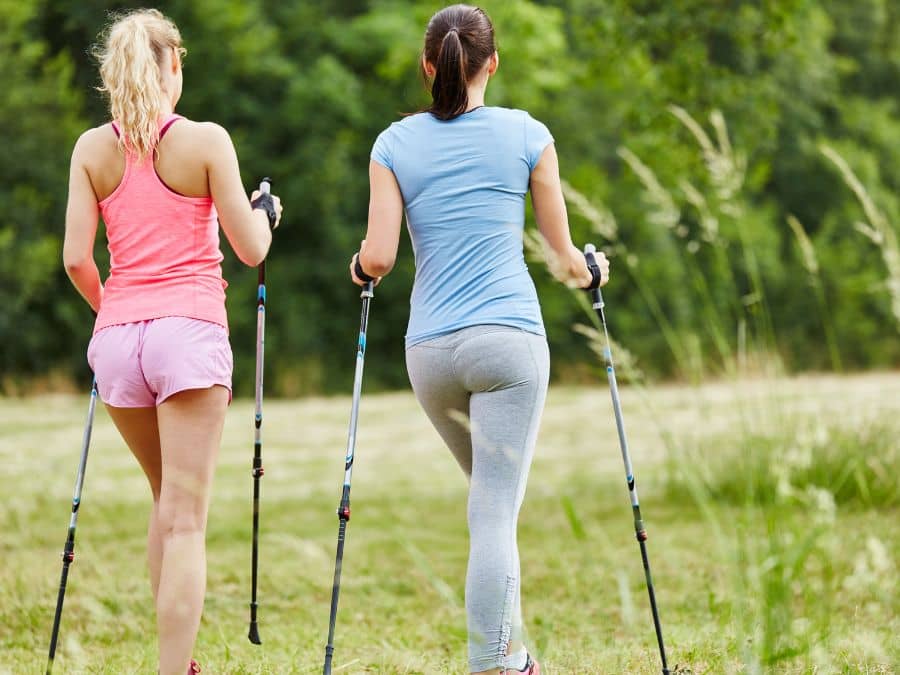
Now that you have learned about the various ways in which you can train your body for hiking’s unique challenges it’s time to get started! Remember that every step taken towards better fitness is a step towards a healthier life overall. So gear up with proper shoes or boots, grab some friends or go solo hit those trails!

